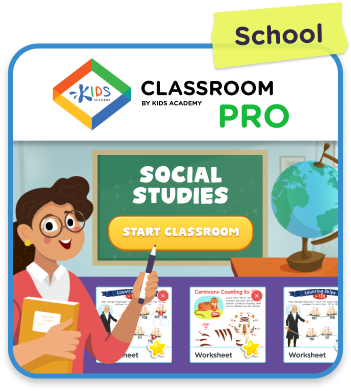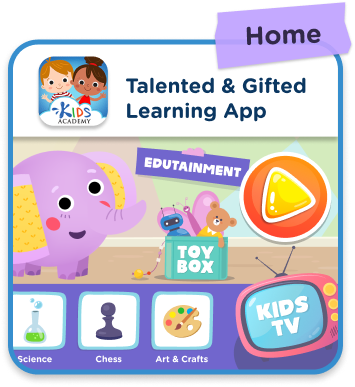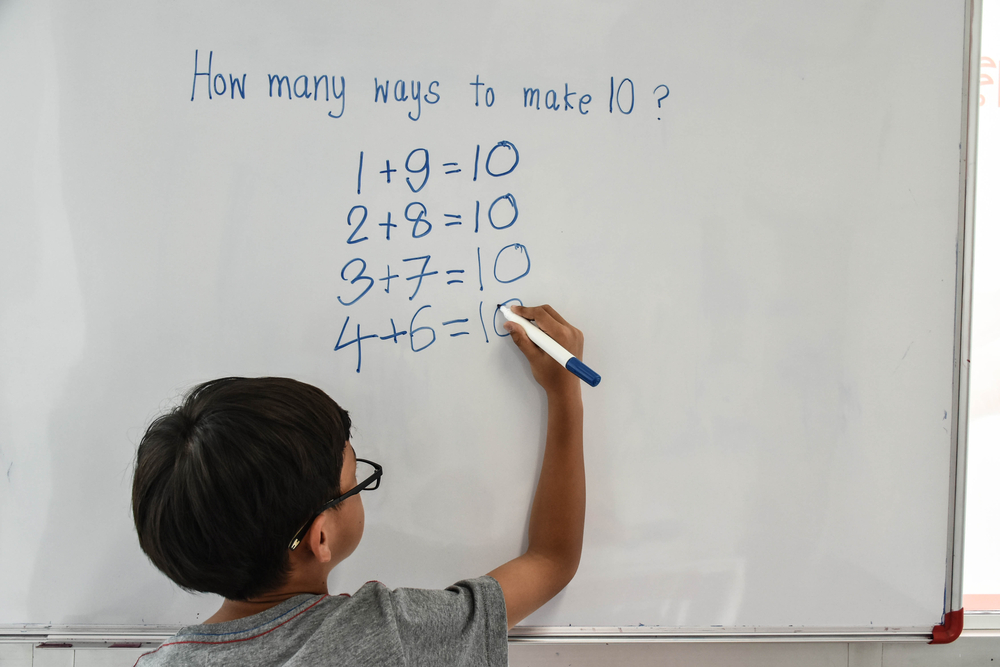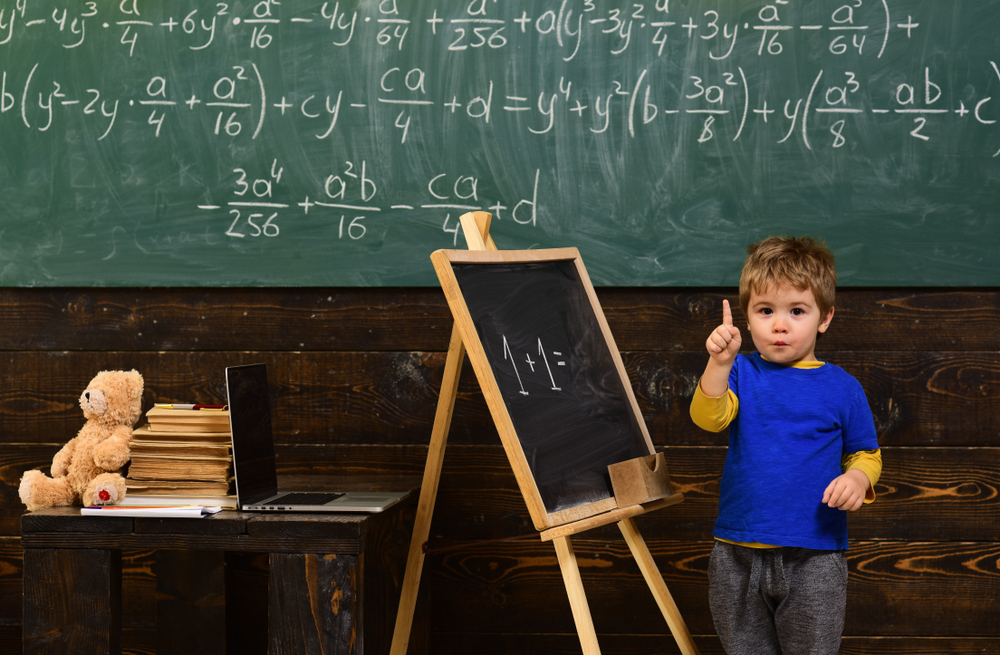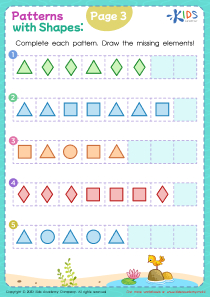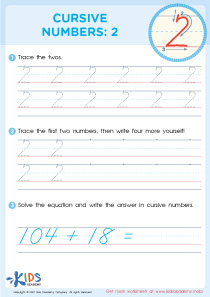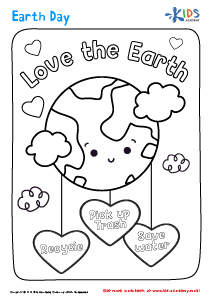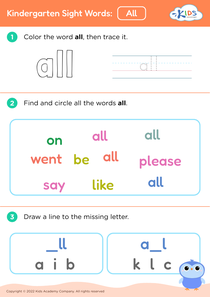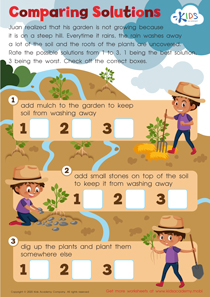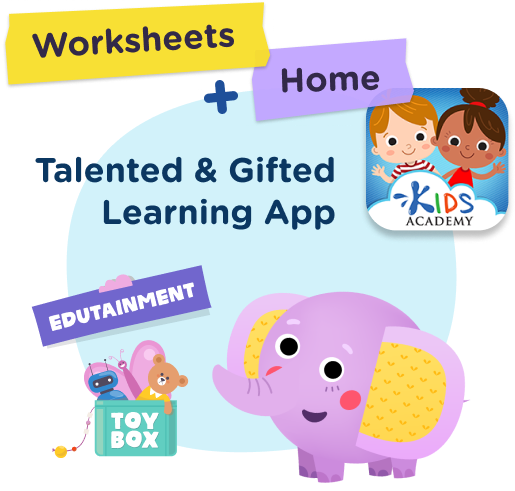Chess strategy learning Worksheets for 6-Year-Olds
10 filtered results
-
From - To
Unlock the world of chess for your 6-year-old with our engaging Chess Strategy Learning Worksheets! Designed specifically for young learners, these worksheets make chess fun and accessible while developing critical thinking and problem-solving skills. Each engaging activity introduces essential concepts like piece movement, basic strategies, and checkmate techniques, all tailored to suit early learners’ ages and comprehension levels. As your child explores the game, they will improve their focus and cognitive abilities while enjoying the strategic challenges chess presents. Download our printable worksheets today and watch your little one master the noble game of chess, one move at a time!
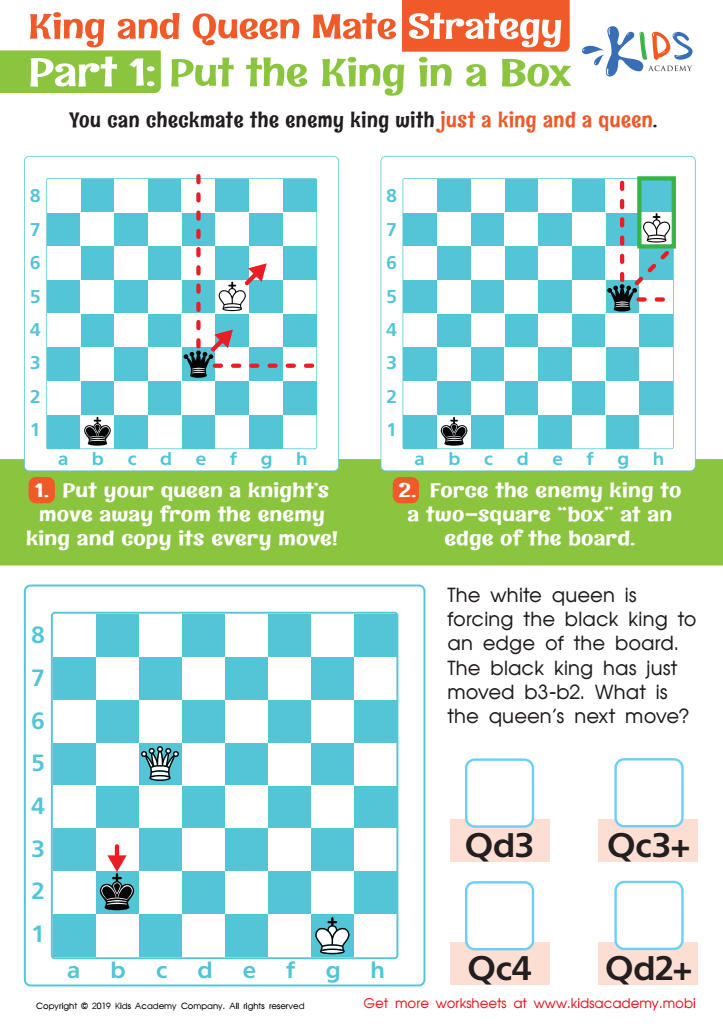

King and Queen Mate Strategy: Part 1 Worksheet
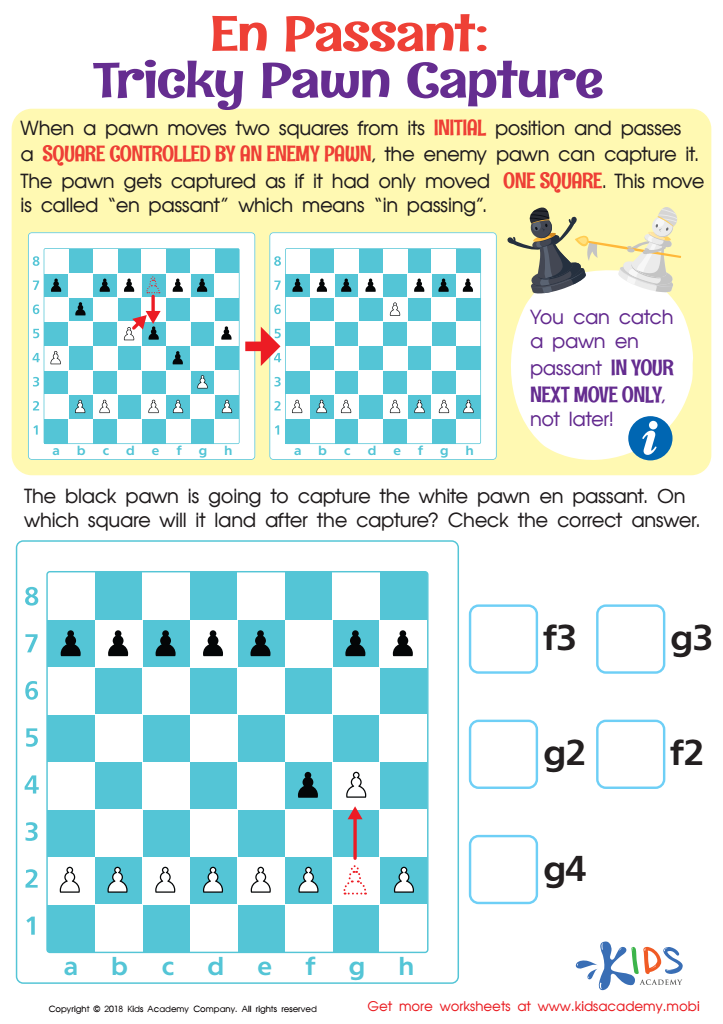

En Passant: Tricky Pawn Capture Worksheet
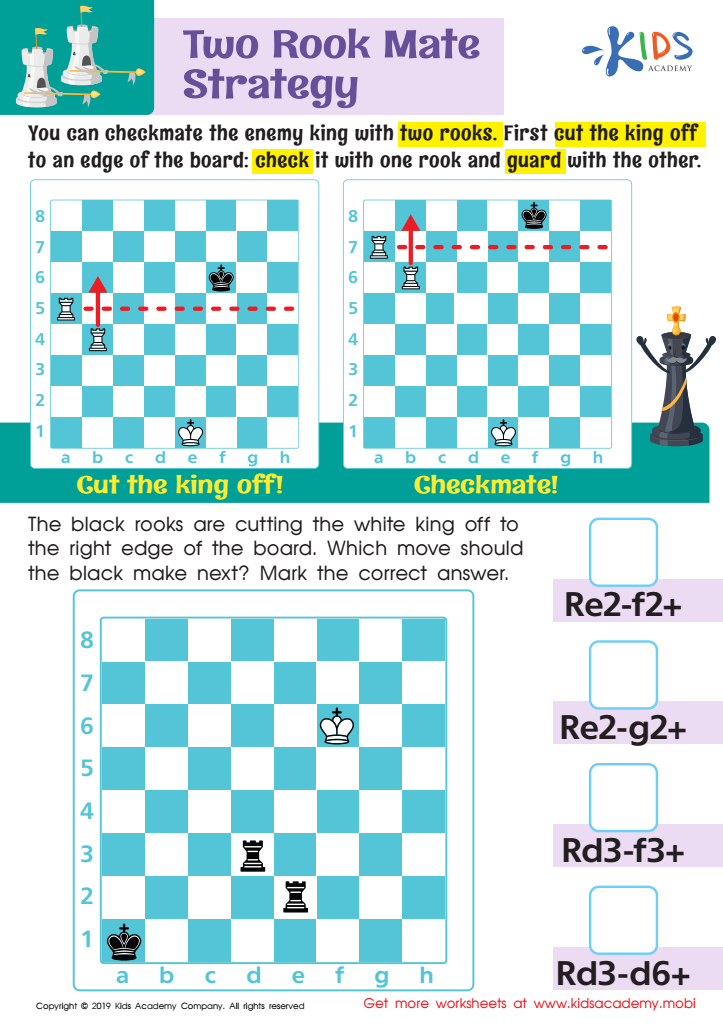

Two Rook Mate Strategy Worksheet
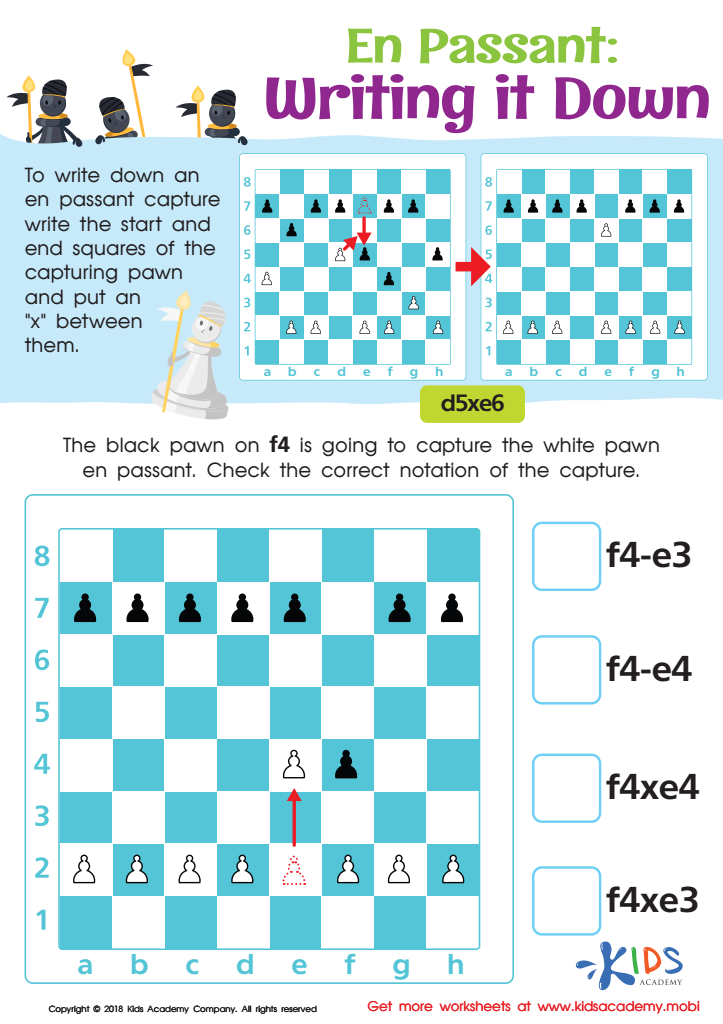

En Passant: Writing it Down Worksheet
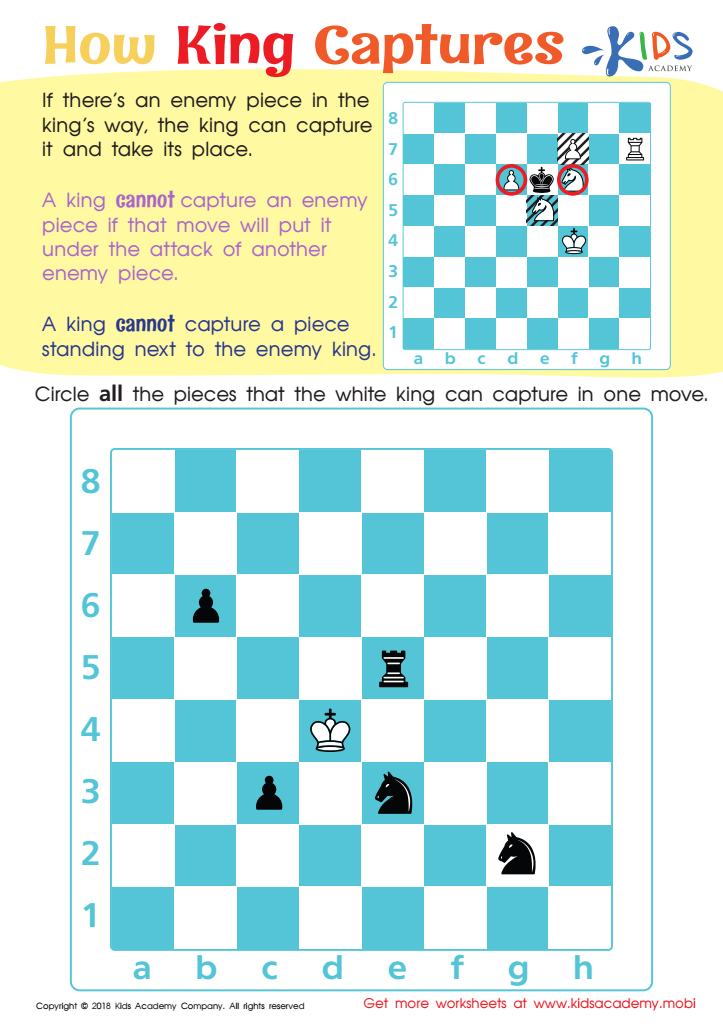

How King Captures Worksheet
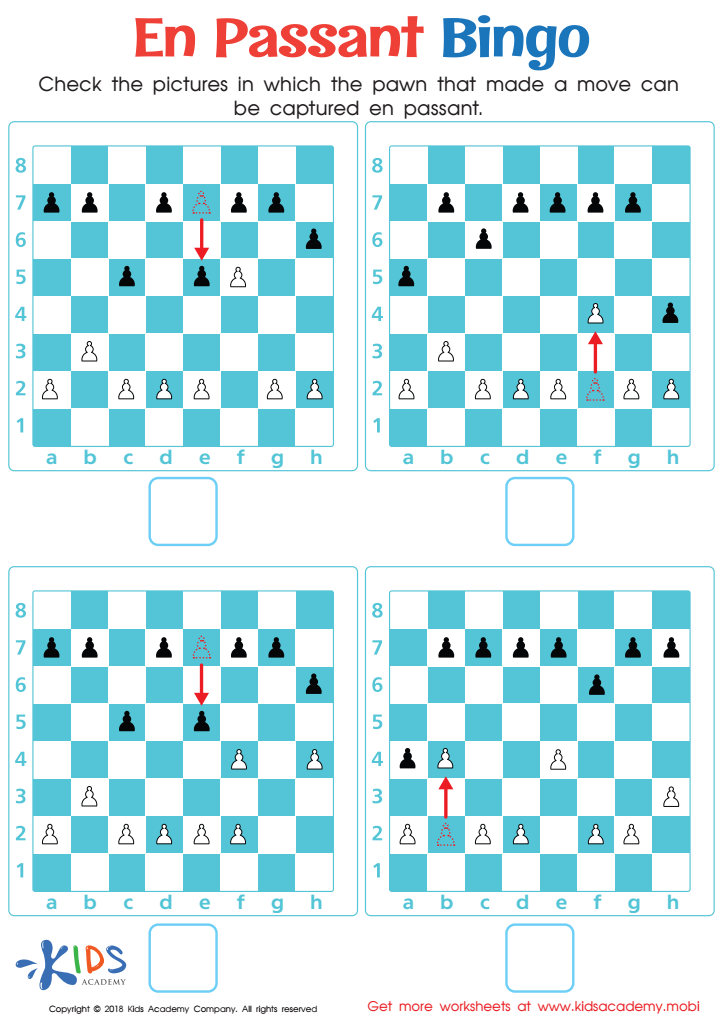

En Passant Bingo Worksheet
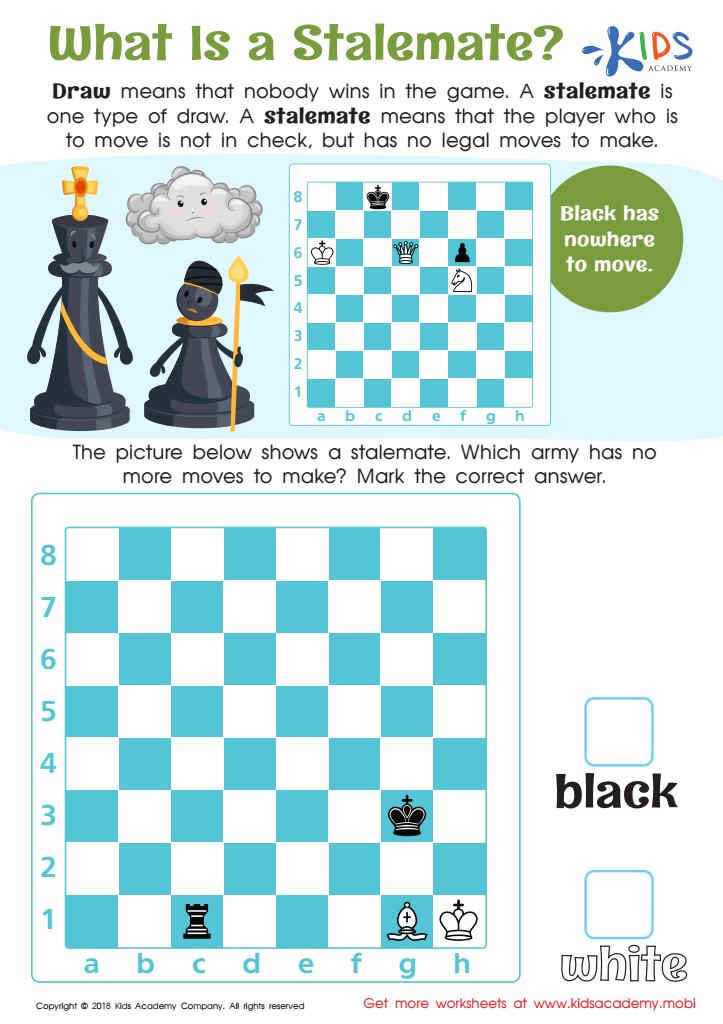

What Is a Stalemate? Worksheet
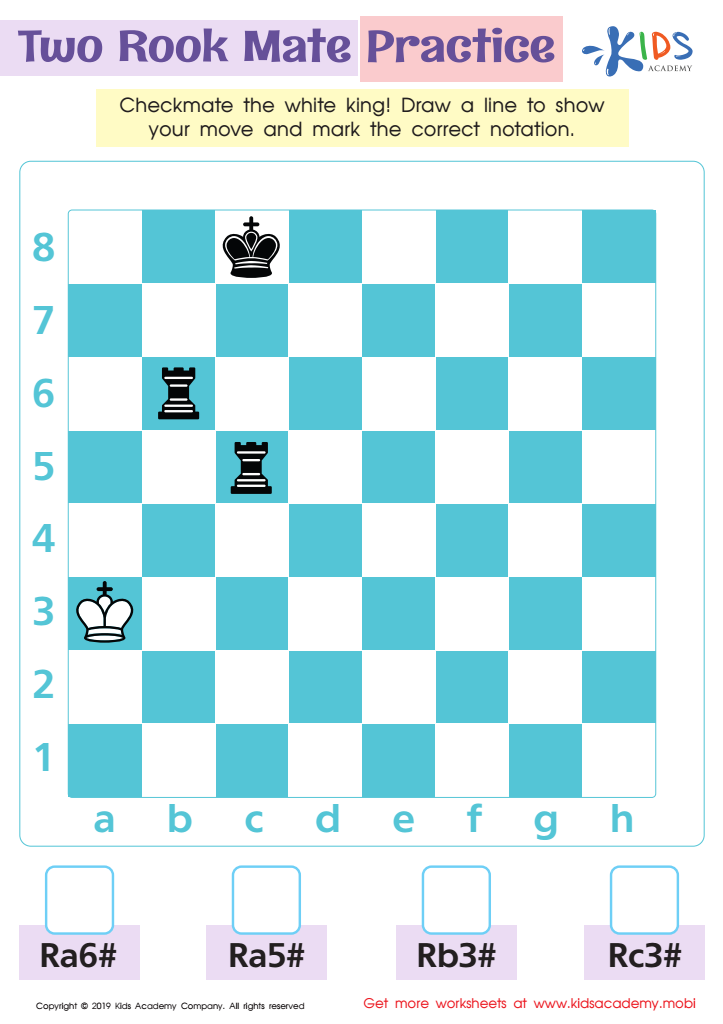

Two Rook Mate Practice Worksheet
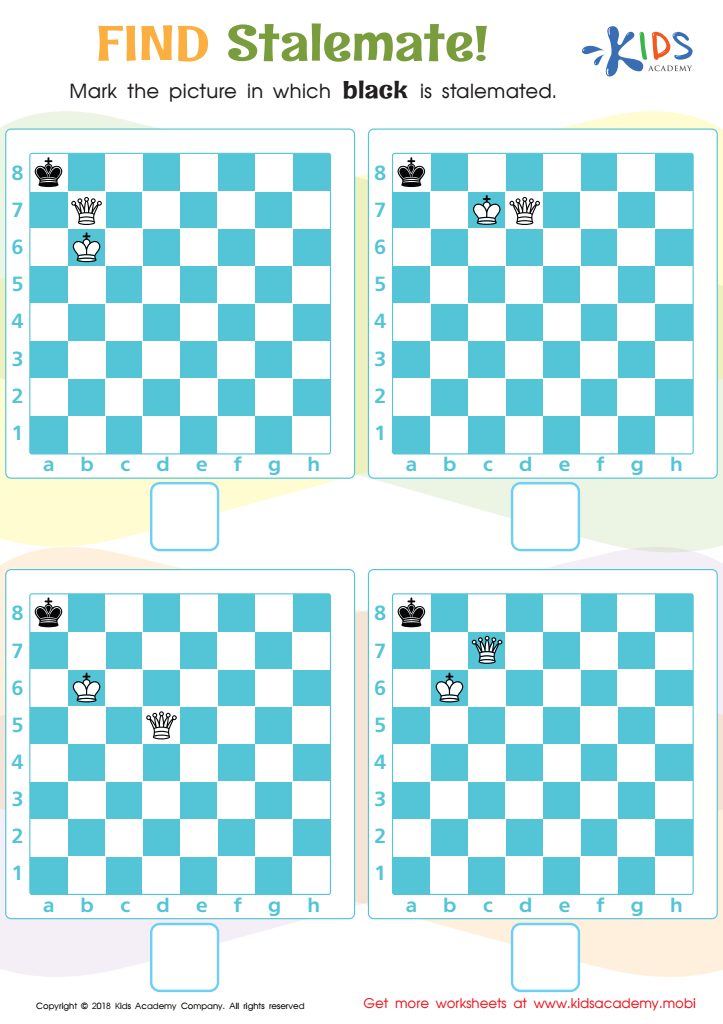

Find Stalemate! Worksheet
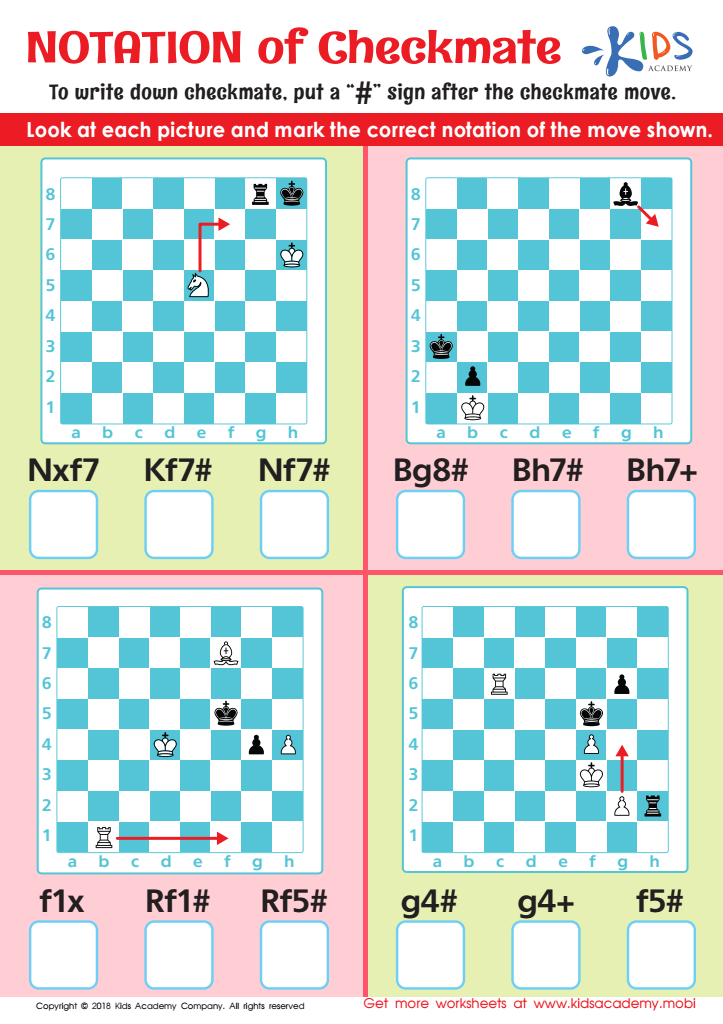

Notation of Checkmate Worksheet
Chess strategy learning can significantly benefit 6-year-olds, offering a unique blend of cognitive and social development. Firstly, chess fosters critical thinking skills as young players must evaluate multiple moves and foresee their opponents' responses. This process enhances their problem-solving abilities, vital for their overall academic journey.
Moreover, engaging with chess encourages patience and focus, qualities essential for classroom learning. As children learn to plan their moves, they develop foresight—an important aspect of both strategic thinking and goal setting. Regular gameplay helps cultivate perseverance as they confront challenges and learn from losses, emphasizing the value of resilience in the face of difficulties.
Socially, chess nurtures interactions and promotes sportsmanship. Children learn to respect their opponents, understand the importance of fair play, and communicate better—skills that will carry into their future relationships.
Furthermore, introducing chess at an early age sets a foundation for lifelong learning. The game combines creativity and logic, encouraging kids to express themselves while engaging in analytical thinking.
By supporting chess strategy learning, parents and teachers equip children with valuable tools that enhance cognitive abilities, improve emotional resilience, foster social skills, and instill a love for learning, resulting in well-rounded, thoughtful individuals.
 Assign to My Students
Assign to My Students
